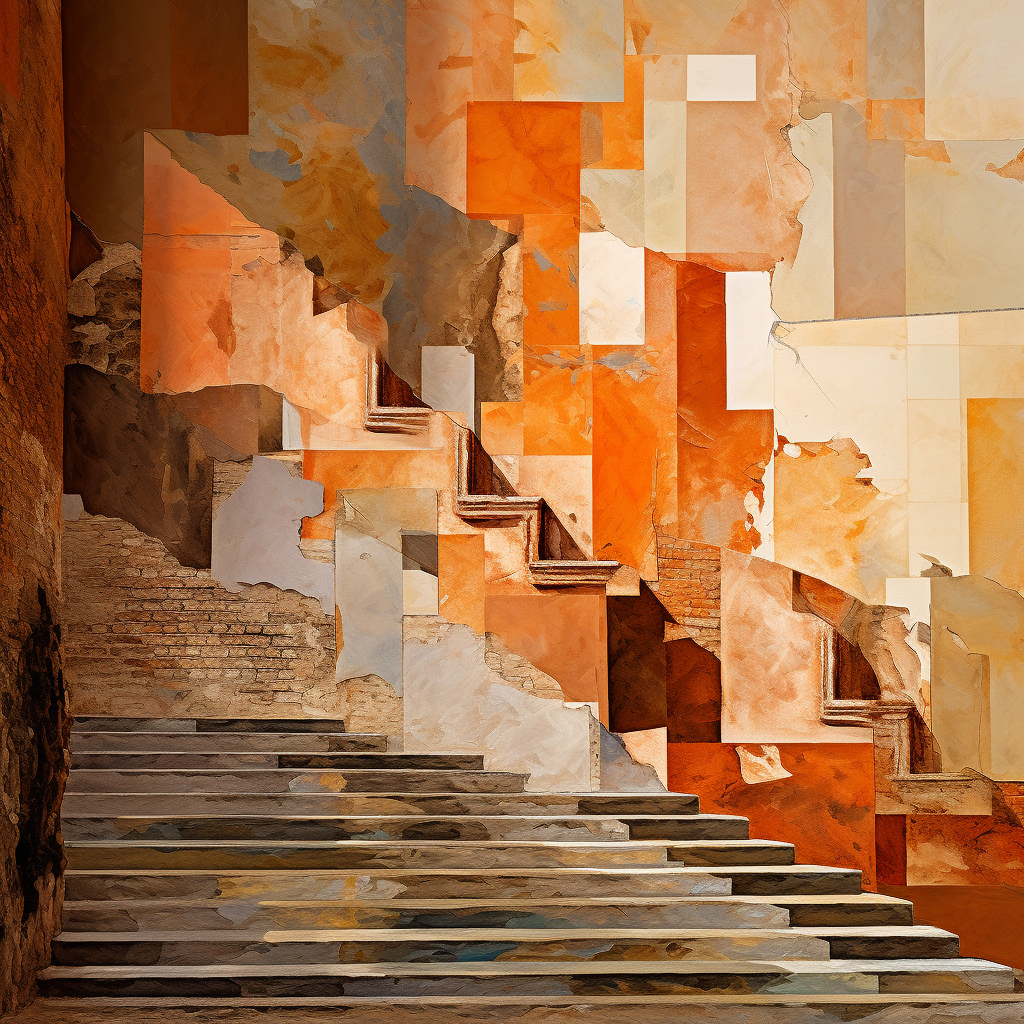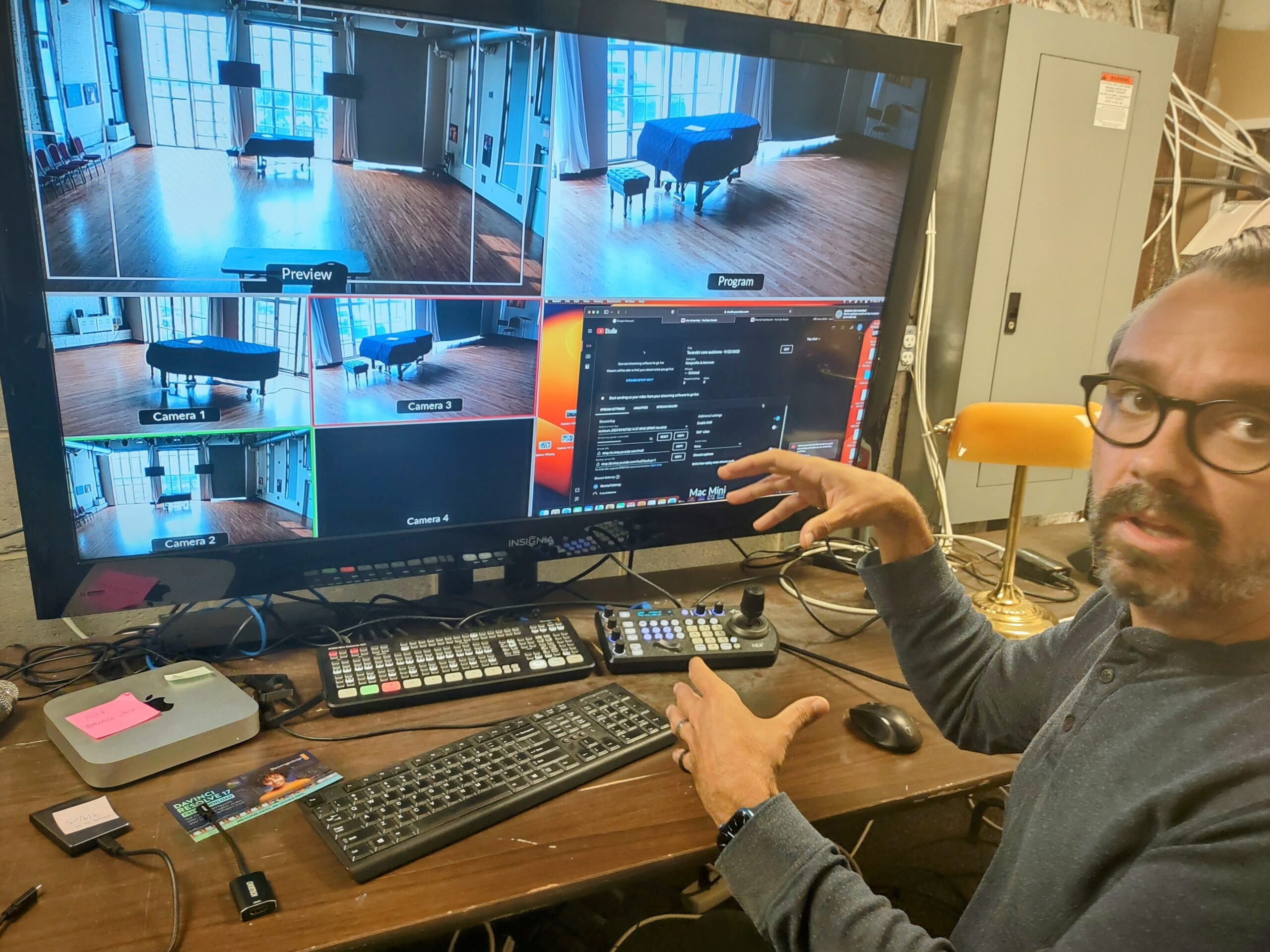Few performing art styles are as associated with the past as opera, with works from the 16th through the 19th centuries being recreated with elements including the distinctive singing style that projects the voice across a theater without a microphone.
It’s a decidedly low-tech art form — but that doesn’t mean technology plays no role behind the scenes of a modern night at the opera.
Brendan Cooke, the general director of OperaDelaware, admits that he was nervous at first about using high tech.
“Technology scares me when it comes to live performance,” Cooke told Technical.ly as he led an informal tour of OperaDelaware’s rehearsal space overlooking the Christina River.
It’s an open space with a grand piano and posters from past OperaDelaware productions on the walls. You may not notice how much technology is present, but even for rehearsals, it’s there. Four digital cameras shoot from different angles while controlled from a video booth on the third floor, where crew and donors can watch through thick windows overlooking the rehearsal.
The video studio aspect came about during the pandemic, when OperaDelaware would make virtual content for its fans.

“That was kind of short-lived,” Cooke said. “Because honestly, there are bigger companies with bigger budgets that were doing more compelling digital programming. The real benefit of it was unexpected, and that’s that it enhances our current process. Every rehearsal is recorded. It’s streamed 10 seconds behind real-time. So if somebody gets sick, rather than having understudies here in town, they’re in their homes. They’re on their couches in New York, watching rehearsals, and if they need to come and step in, they are up to speed.”
Since opera companies cast and contract with talent from all over the country, this is no small perk.
Some of the most impressive tech behind OperaDelaware is on the creative end, with set and lighting design. For this season’s production of “Rigoletto,” a joint project with Opera Baltimore, those roles belong to Jefferson Ridenour and Tlaloc Lopez-Watermann, respectively.
“In our world today, in design and theater and opera and any live performance, the majority of us use computer-assisted rendering, drafting programs such as Vectorworks or AutoCAD,” Ridenour told Technical.ly via a Zoom call from his home in Astoria, Queens.
Although digital 2D sketch rendering has been common for a while, Ridenour can now create a 3D rendering of the set that he can “walk” through and view from different seats in the theater. The rendering file can then be shared with Lopez-Watermann, who adds lighting within the 3D model before they’ve set foot in the physical space for the production.

“Traditionally, in years past and even to this day, physical models are made in a similar way as architects do,” said Lopez-Watermann, who travels so often for his work that he doesn’t consider any single city home, via Zoom. “This is easier to go in and scale and understand it. I think, as we start to get into some of the augmented reality stuff that’s coming up with the Vision Pro and Oculus and things like that, you might even be able to go sit in a seat in the space.”
While the renderings seem XR-ready, it’s not the only future technology for set designers. Ridenour is starting to use AI to explore ideas at the beginning of the process.
“When I’m meeting with the director, and I have an idea of where we’re headed, I may do some pencil sketches to get my ideas out quickly as I’m listening to the music and studying the piece,” Ridenour said. “My new step now is that I like to put in a prompt in Midjourney and see what I can come up with and how I can tweak it. I’ve actually found, in the last two productions with OperaDelaware and Opera Baltimore, some really exciting ideas and results.”
Not literal results, he stresses: “That’s the thing about AI, is that you have to use it as a tool. It’s not the final product.”
And all of the technology in the world can’t replace creativity and knowledge.
“I think it’s really, really important to realize that we have this giant, giant box of tools, but that it’s really really important to have a very strong art history background to understand the history of what things look like at certain periods of time,” said Lopez-Watermann. “If you’re using a Midjourney-style prompt, if you have a really strong art history background like Jefferson does, you can be the drive. Otherwise, you’re just going to get something that’s not really where you want to be with it. You’ve really got to have fundamentals when it comes to design.”
Still, some opera companies are resistant to technology, even as tools such as AI and XR become standard. Technology and opera have long coexisted: Since traditional opera is performed in its original language — most often Italian — supertitles, or subtitles that are often projected over the stage, have been in use since the 1980s. Cooke pointed out that at New York’s Metropolitan Opera House, subtitle screens are built into the seat backs and translated into multiple languages.
Now that OperaDelaware has seen what technology can do behind the scenes, there’s no looking back.
“I think that [Lopez-Watermann and Ridenour] are magicians,” Cooke said. “Why wouldn’t we give them every tool?”








